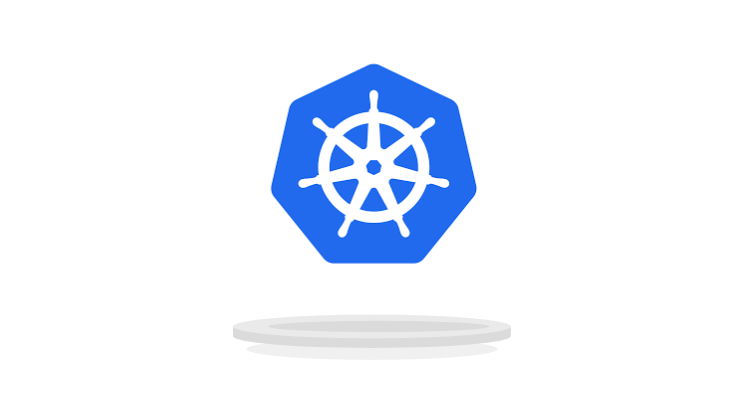
What is Kubernetes, and why is the tech world going crazy about it?

Kubernetes is not a novelty anymore – but somehow, its potential is still far from being exploited. It started being adopted on a massive scale only recently, and is now in production at 78% of enterprises surveyed by The Cloud Native Computing Foundation (CNCF). Before that, however, Kubernetes didn’t really get the attention it deserves.
If you’re still sceptical about Kubernetes for some reason, it might be the right time to change your mind and join these change-makers, instead of struggling to understand what this platform is all about. To make it easier for you: Here’s what Kubernetes is, along with the reasons why the tech world is going crazy about it (and why you should, too).
What is Kubernetes in the first place?
The first mentions of Kubernetes date back to 2014, with Google’s internal container cluster managers Borg and Omega. Since then, thousands of sources have covered the topic – including the history of Linux, containers, and a lot of technical jargon. The thing is: Kubernetes is quite complex, but it doesn’t necessarily have to be complicated.
Before you understand Kubernetes, though, you have to be familiar with containers first. These are simply standard units of software that package up the code and all its dependencies, libraries, and configuration files. This way, the application can actually run in a quick and reliable manner from one computing environment to another.
While containers are relatively easy to grasp and deploy – managing them at scale is a completely different story. Basically, if you have to control a lot of containers, the best way to do so is by automating the whole process, at least to some extent. Without it, for example, you’ll have to manually update all of these containers every time there’s a new feature released on-site. Manual work is not only time-consuming but also prone to errors.
In such circumstances, an orchestration tool becomes much appreciated. And here’s exactly when Kubernetes comes in useful. It’s an open-source project started at Google, which automates container operations, and makes it possible to run them at scale. Thanks to it, there’s no need to perform all processes revolving around deploying and scaling containerised applications manually anymore – with Kubernetes, you can cluster together groups of hosts running Linux containers, and manage those clusters easily and efficiently.
Why Kubernetes?
It might not seem like it at first, but Kubernetes might just be the right choice for your needs – no matter if you’re a developer who wants to try something new or a business owner that’s looking for new investment. Here’s why.
- It makes it possible to easily configure, automate, and manage scheduling, creation, deletion, and movement of containers – as a result, a single administrator can manage thousands of containers running simultaneously,
- It leverages the power of containers while simplifying the management of services and machines in a cluster. Plus, Kubernetes Clusters allow for deploying workloads to the entire cluster as opposed to a particular server,
- The Clusters also span hosts across on-premise, public, private, or hybrid clouds – which is why Kubernetes is said to be an ideal platform for hosting cloud-native applications that require rapid scaling,
- At the same time, Kubernetes provide greater efficiency for developers – DevOps teams can easily package an application into a container and deploy it consistently across different platforms, so there’s no need to wait a long time for machine provisioning,
- What’s more, Kubernetes can save a considerable amount of infrastructure and maintenance costs, helping to make better use of hardware, and all resources needed to run applications,
- Not to mention that Kubernetes has monitoring and self-healing abilities – for example, when a container crashes, a new one will be created automatically.
Are these benefits enough for the tech world to get excited about Kubernetes? Definitely.
As enterprises are searching for ways to improve how their applications are being developed – they are bound to find Kubernetes along the way. This stems from the fact that increasingly more businesses are embracing containers in the first place – and rightly so. At some point, however, they need powerful ways to scale and manage them properly. And Kubernetes is what makes it possible.
In fact, the ability to completely automate the orchestration of containerised applications is why 83% of surveyed tech professionals chose Kubernetes. In the early days, it might’ve just been a hype – but there’s no doubt that it’s now being widely adopted at scale. Over the years, it has not only become more “serious” and stable, but also available in a variety of models for businesses.
At the same time, however, enterprises have realised that taking advantage of Kubernetes requires a specific skill set. It might be one of the reasons why the share of Kubernetes job searches increased by 2,125% in just a few years. The higher demand and interest in the platform also contributed to the growth of the community around Kubernetes, with the yearly KubeCon conference evolving from a relatively small event to a global gathering with thousands of people.
There’s no doubt that the tech world is going crazy about Kubernetes – and it might be the right time for you to get excited about it as well.
Kubernetes vs public cloud platforms
Ready to leverage Kubernetes? Technically, you could install and manage everything yourself – but at this point, it will be much easier and faster to just choose a managed solution. Especially since managed services for Kubernetes are now offered by the largest public cloud platforms (such as AWS, Google Cloud and Azure). See it for yourself:
- Amazon Elastic Container Service (EKS) for Kubernetes. If you already use AWS for something else, then you should definitely select this option. As a matter of fact, many enterprises have already trusted EKS to run their most sensitive and mission-critical applications, mostly because of its security, reliability, and scalability.
- Azure Kubernetes Service (AKS), on the other hand, is the quickest way to use Kubernetes on Azure. It makes it possible to define, deploy, debug and upgrade even the most complex Kubernetes applications, accelerating containerised application development for many teams around the world.
- Google Kubernetes Engine is also a popular choice that helps to develop a wide variety of apps with support for stateful, serverless, and application accelerators, allowing for the use of Kubernetes-native CI/CD tools to secure and speed up each stage of the build-and-deploy life cycle.
And that’s not all. It’s clear to see that major players in the cloud market support Kubernetes one way or the other, which should be a good enough reason to give it a try.
The right time to try Kubernetes is now
Kubernetes has been designed with over a decade of experience in running containerised applications at Google. What’s even more important, though, is that it’s been evolving ever since.
In the process, the largest public cloud vendors, and technology providers, along with many software vendors and enterprises have already embraced it, or are planning to do so. Are you ready to join them as well? Discuss your project with our team.










